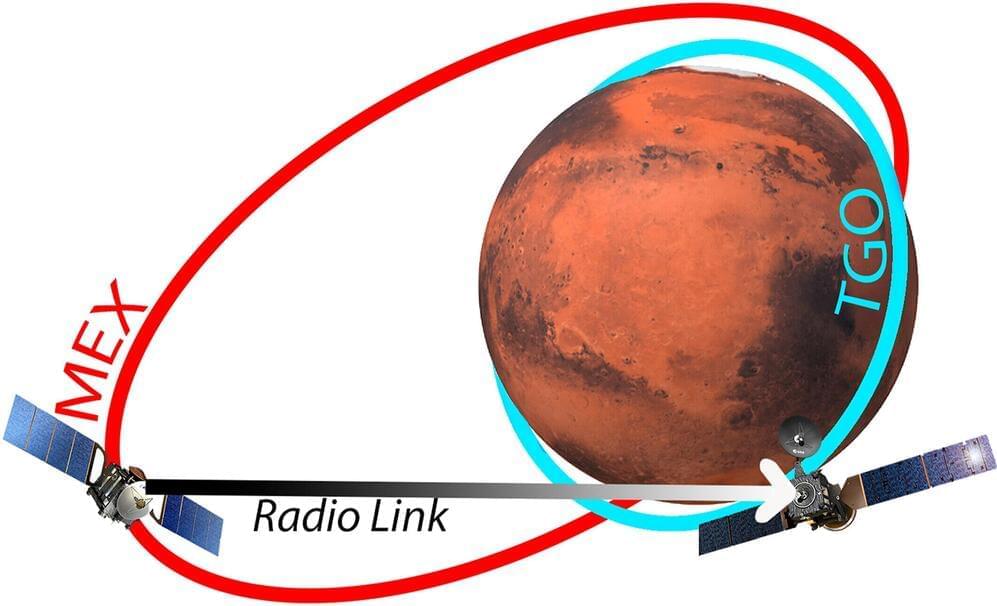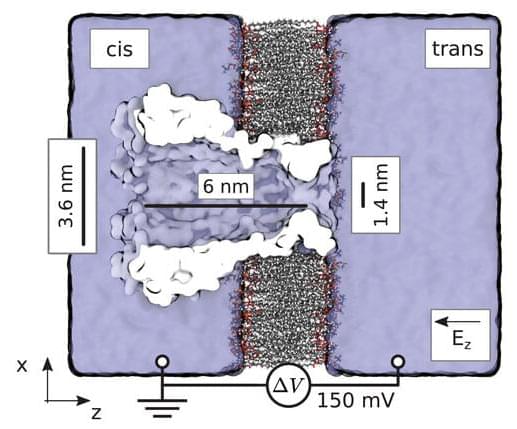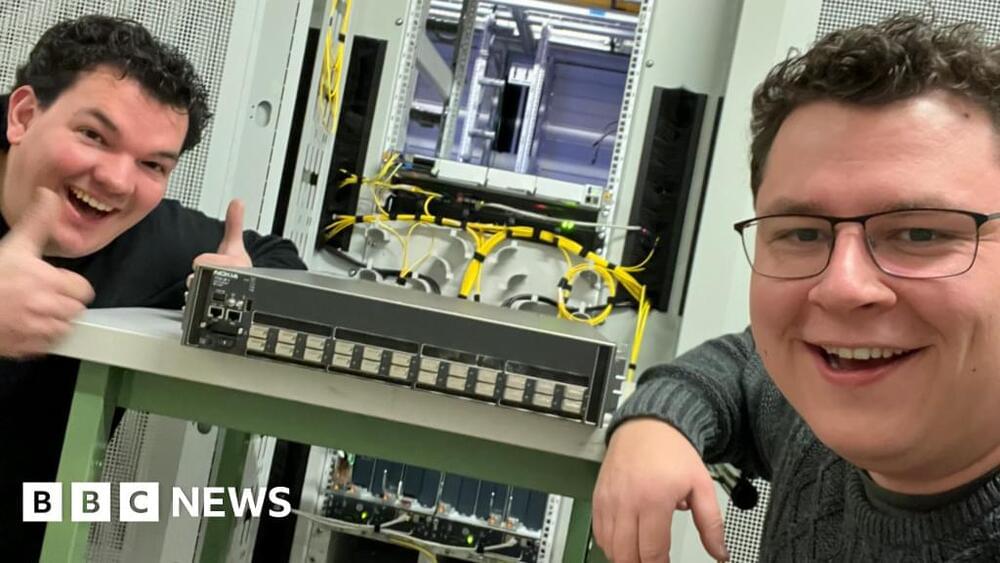With bodies that move and hands that wave, deepfakes just got a whole lot more realistic.
Category: futurism – Page 262

Repurposed technology used to probe new regions of Mars’ atmosphere
Using the repurposed equipment, a team including Imperial College London researchers have measured parts of the Martian atmosphere that were previously impossible to probe. This includes areas that can block radio signals if not properly accounted for—crucial for future Mars habitation missions.
The results of the first 83 measurements, analyzed by Imperial researchers and European Space Agency (ESA) colleagues across Europe, are published today in the journal Radio Science.
To achieve this, ExoMars’ Trace Gas Orbiter (TGO) teamed up with another ESA spacecraft orbiting the red planet: Mars Express (MEX). The two craft maintain a radio link, so that as one passes behind the planet, radio waves cut through the deeper layers of the Martian atmosphere.

Earth at Aphelion: Understanding Why It’s Hot When We’re Farthest from the Sun
On July 5, 2024, at around 1 a.m., Earth reached its farthest point from the Sun, known as aphelion. This annual event raises an intriguing question: why are we experiencing summer heat when our planet is at its greatest distance from the Sun?
Understanding Aphelion
During aphelion, Earth is about 94.5 million miles (152 million kilometers) away from the Sun. This contrasts with perihelion, which occurs in early January, when Earth is closest to the Sun at approximately 91.4 million miles (147 million kilometers).

4,000-year-old Rock Art From A Previously Unknown Ancient Culture uncovered in Venezuela
An archaeological team in Venezuela has uncovered 20 ancient rock art sites in Canaima National Park in the southeastern part of the country, consisting of both pictograms and petroglyphs, estimated to be about 4,000 years old.
This discovery reveals a previously unknown culture, even though similar rock art has been found elsewhere in South America.
The newfound rock art, referred to as pictograms, was painted in red and featured geometric shapes such as dotted lines, rows of X’s, star-shaped patterns, and interconnected straight lines. Additionally, there are simple depictions of leaves and stick figure drawings of people. Some images, known as petroglyphs, were incised into the rock and exhibit similar geometric designs.




Batteries the key as cell prices plunge and wind and solar ramp up towards 50 pct share
Renewable generation should be around 50 per cent of supply on Australia’s main grid by July, 2026, although it might be a bit less depending on progress on the second stage of Golden Plains, which will be the country’s biggest wind farm – at least for a time – when complete.
To get to 80 per cent by 2030 will partly depend on what happens to demand. If demand is flat, then capacity capable of supplying around 67 terawatt hours (TWh) a year will be needed. After allowing for rooftop solar, I reckon that equates to about 25 gigawatts of new capacity, maybe a bit more.
That’s a heck of an ask, but in my opinion still possible and broadly in line with the objectives and scale of the Capacity Investment Scheme (CIS). I’ll have more to say on the role of the CIS once I get round to talking about ITK’s price forecasts, but that can wait. We’re talking capacity and output in this not.
